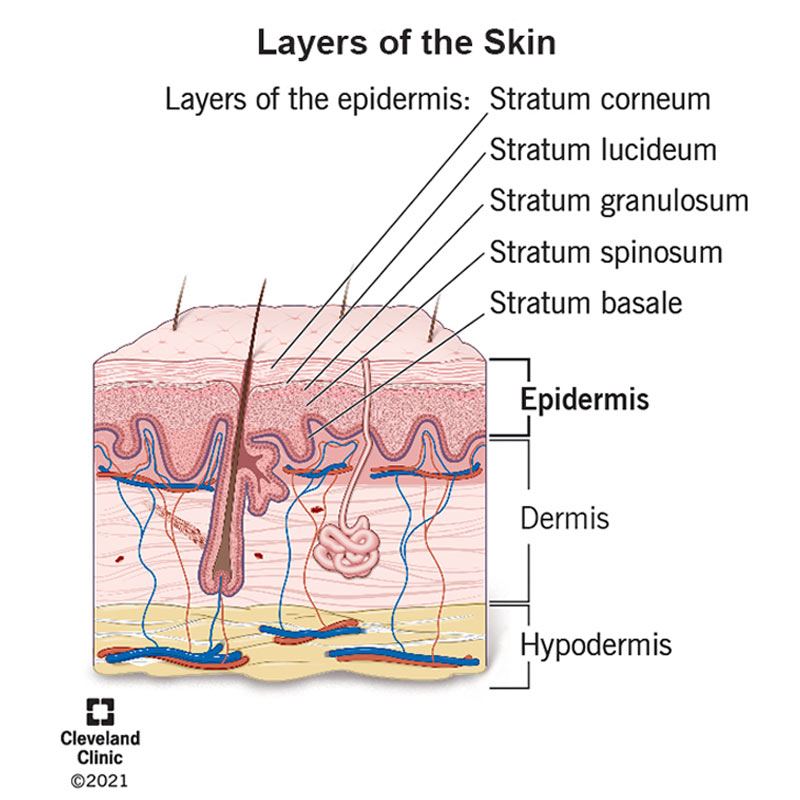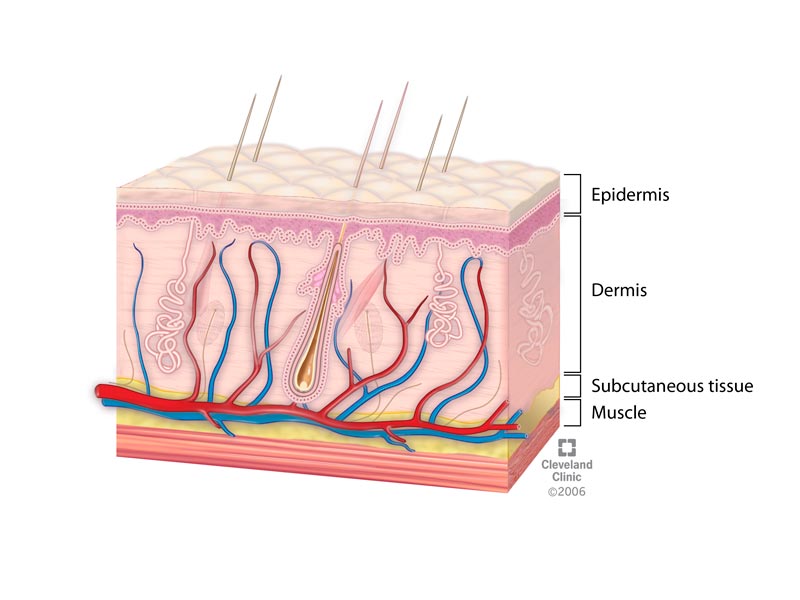Describe the Structure and Function of the Skin
The folding of a protein chain is however further constrained by many different sets of weak noncovalent bonds that form between one part of the chain and another. To overcome this issue the body has developed clever ways to produce rapid electrical transmission via a.
For many molecules the sharing of electrons allows each atom to attain the.
. However they can stretch for meters and meters. The Swedish chemists J. This article will describe the anatomy and histology of the skin.
Axons are responsible for conducting electrical signals. The term gene was coined and studied by Wilhelm Johannson. The trapezius has three functional parts.
A superficial epidermis and a deeper dermis. Changes in characters clothing can help reveal character development. Describe the layers of the skin and the functions of each layer.
For this lecture you should focus on the major concepts and not on the names of the different bacteria. Mendel first discovered the concept of the inheritance of traits despite he fails to describe it. The weak bonds are of three types.
Some skin disorders and infections can cause color changes in the skin. In Dostoyevskys Crime and Punishment the poor Tuberculosis-stricken Katerina Ivanovnas husband is trampled to death by a horse-drawn cart. The trapezius is a large paired trapezoid-shaped surface muscle that extends longitudinally from the occipital bone to the lower thoracic vertebrae of the spine and laterally to the spine of the scapulaIt moves the scapula and supports the arm.
But he was unable to describe the chemical structure of it. At the end of this class you should be able to. Describe the different types of bacteria 3.
See also Structure and Function. The skin is composed of two major layers. Describe gross microscopic structure of skin Enumerate functions of skin Appreciate importance of anatomy of skin in clinical practice 3.
Hydrogen bonds ionic bonds and van der Waals attractions as explained in. Covers outside of the body Consists of. Joint Capsule a thick fibrous structure that wraps around the knee joint.
The anal canal is an important part of the continence organ. The work in cells and are required for the structure function and regulation of the bodys tissues and organs. The organ constitutes almost 8-20 of body mass and has a surface area of approximately 16 to.
Tissues are groups of cells with both a shared structure and function. Anabolic steroids also known more properly as anabolicandrogenic steroids AAS are steroidal androgens that include natural androgens like testosterone as well as synthetic androgens that are structurally related and have similar effects to testosterone. This is the tube that runs the length of the penis through which semen and urine exit the bodyThe opening at the head itself.
In the cell body neurons store genetic material and produce energy to function. These involve atoms in the polypeptide backbone as well as atoms in the amino acid side chains. The epidermis consists of several layers The topmost layer consists of dead cells that shed periodically and is progressively replaced by cells formed from the.
The pair of collateral ligaments keeps the knee from moving too far side-to-side. Anything that interferes with skin function or causes changes in appearance see Effects of Aging on the Skin Effects of Aging on the Skin Aging results in thinning of the dermis and epidermis. A covalent bond is a chemical bond that involves the sharing of electrons to form electron pairs between atomsThese electron pairs are known as shared pairs or bonding pairs and the stable balance of attractive and repulsive forces between atoms when they share electrons is known as covalent bonding.
The novels protagonist Rodion gives Katerina the last of his money to host a funeral. As a result one enantiomer will be given an L designation while the other is D. Beneath these are the muscles and other tissues that the skin covers Fig.
Structure and Function of Skin. Read more help mark people as individuals. Literally covering you from head to toe.
Inside the capsule is the synovial membrane which is lined by the synovium a soft tissue structure that secretes synovial fluid the lubricanr of the knee. Epithelial tissue covers the outside of the body and lines organs vessels blood and lymph and cavitiesEpithelial cells form the thin layer of cells known as the endothelium which is contiguous with the inner tissue lining of organs such as the brain lungs skin and heartThe free surface of epithelial tissue is usually exposed to fluid or. Also known as the head of the penis this bulbous sensitive structure is covered with a loose layer of skin called the foreskin prepuceThe foreskin is sometimes removed in a surgical procedure known as circumcision.
An upper descending part which supports the weight of the arm. Different types of tissues can also be arranged together to form organs. The skin is the largest organ of the human body weighing approximately 16 of our bodyweight.
So L-glucose is the mirror image of D-glucose. Biochemical notation uses the letters D and L to describe monosaccharide stereochemistry in a very particular way. Cells that make up animal tissues are sometimes woven together with extracellular fibers and are occasionally held together by a sticky substance that coats the cells.
Undoubtedly the skin is the largest organ in the human body. Enclosed by this cell membrane are the cells constituents including cell organelles and jelly-like fluids called cytosols with water-soluble molecules such as proteins nucleic acids carbohydrates and substances involved in cellular activities. Skin appendages Hair Nails Glands 4.
They increase protein within cells especially in skeletal muscles and also have varying degrees of virilizing effects including. Skin consists of multiple layers epidermis dermis and hypode. This is the cone-shaped end of the penis.
Scientists measure and describe the external features of fishes to identify species assess age and health and learn about structure and function. It is strongly pigmented and has all typical skin-associated structures such sweat and sebaceous glands Pacinian corpuscles and hair follicles. Change characters clothing to highlight character development.
Discuss the distinguishing characteristics of Gram positive and Gram negative bacteria. This skin is sometimes removed in a procedure called circumcision. Integumentary system Integumentary - covering.
And the dermis or inner layer. Structure and Function- Carbohydrates. The skin of the penis is loose and elastic allowing for changes in penis size during an erection.
The glans which is also called the head of the penis is covered with a loose layer of skin called foreskin. Scientists work with a variety of types of fishes to do this. To be a barrier keeping the constituents of the cells in and unwanted.
The cell membrane therefore has two key functions. Cutaneous zone- It is equal to the histological structure of the skin with stratified squamous keratinized epithelium. A middle region transverse.
In 1953 James Watson and F Crick defined the chemical structure of the DNA viz gene. The epidermis is. Discuss bacterial structure and the function of the different bacterial components 4.
Epithelial Tissue Function. They need to respond and provide information quickly.

Integumentary System Diagram Google Search Skin Anatomy Integumentary System Human Integumentary System

Epidermis Outer Layer Of Skin Layers Function Structure

Integumentary System Facts Jpeg Integumentary System Facts Are Provided In Short In The Following Skin Anatomy Physiology Anatomy And Physiology

Worksheet What Is The Structure And Function Of Skin Hs Ls1

Skin Poster Medical Anatomy Poster 24 X 36 Laminated Quick Reference Medical Anatomy Skin Anatomy Anatomy

Skin Layers Structure And Function
0 Response to "Describe the Structure and Function of the Skin"
Post a Comment